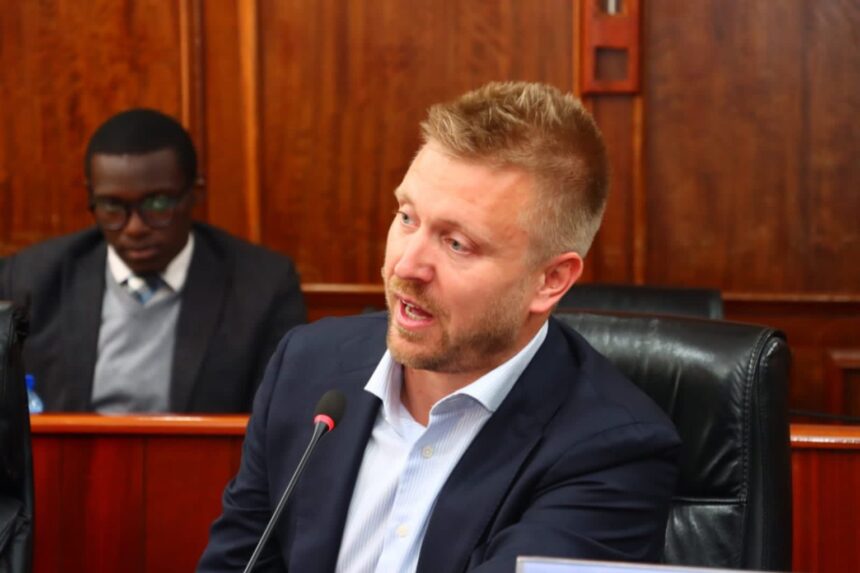Watu Credit, a Pan-African buy-now-pay-later firm, is betting on smartphones as the next frontier of financial inclusion in Africa. Once known primarily for financing motorbikes, the company has also shifted its focus to handset loans.
By targeting low-income earners and informal workers who are excluded from formal credit, Watu believes smartphone financing can unlock new opportunities for digital access, economic participation, and growth across the continent.
“We’re targeting the financing of 5,000 electric vehicles, expanding our smartphone financing to over two million devices, and continuing our geographic expansion while deepening our impact in existing markets,” Watu said in its 2024 sustainability report.
The company’s sustainability report indicates that Watu sees its role not just as a lender, but as an enabler of digital inclusion.
What You Should Know
Smartphone lending now accounts for most of Watu’s new loans, with the company planning to finance over two million devices in 2025. The firm is also targeting the financing of 5,000 electric vehicles as part of its diversification push.
The company is doubling down on smartphone financing as it seeks to hit KES 44 billion ($340 million) in revenues in 2025. This shift has reshaped Watu’s loan book. Active loans tripled in 2024 to 1.9 million, and the company expects to grow to 2.3 million in 2025.
A significant portion of this growth is expected to come from women, who were largely excluded from motorbike financing but are increasingly driving handset demand. Nearly 900,000 loans in 2025 are projected to go to female borrowers.
In 2024, Watu reported gross revenues of KES 29.9 billion ($231.4 million), a 67% jump from the previous year. However, net profit plunged by 85% to just $1.2 million, underscoring the risks of expanding microlending to low-income borrowers in markets such as Kenya and Uganda.
Rising defaults and higher operational costs weighed heavily on the bottom line, raising questions about whether Watu’s model can sustain scale.
Understanding Watu’s Model
Founded in 2015 by Latvian entrepreneur Andris Kaneps, Watu began as a motorbike financing company, helping informal transport operators acquire motorcycles to earn a living.
Over the years, the company has evolved into a diversified asset financing platform, adapting its model to shifting consumer demand.
To date, Watu has raised over $20 million across five funding rounds, with backing from institutional investors such as FMO, Gateway Partners, Verdant Capital, and AHL Venture Partners.
Its most recent raise was a Series B in February 2024, underscoring investor confidence in its growth trajectory.
Despite the expansion, Watu has been streamlining operations. Employee numbers dropped 3.6% to 2,465 in 2024, a sign of the company’s increasing reliance on digital channels and automated systems to manage millions of small-ticket loans.
What’s Next for Watu
If Watu achieves its $340 million revenue target in 2025, it will mark one of the fastest growth streaks among African BNPL players.
However, experts say the key question is whether smartphone lending, while massively expanding access, can sustain profitability. High default rates, repayment pressures, and stiff competition could weigh heavily on margins.
By financing affordable smartphones, observers say it is betting on Africa’s rising digital economy, from mobile money transactions and e-commerce to health and education platforms that now run on smartphones.
Industry leaders say the next phase of Watu’s journey will depend on how well it balances scale with financial discipline.
Talking Points
It is significant that Watu’s product is now smartphone financing, overtaking its once-dominant motorbike loans. This reflects how handsets have become indispensable tools for income generation, digital payments, and social mobility across Africa, making them a natural fit for asset financing.
The company’s plan to finance over two million smartphones by 2025, with nearly 900,000 loans going to women, highlights a deliberate strategy to deepen financial inclusion.
By targeting demographics traditionally excluded from motorbike lending, Watu is expanding both its reach and its social impact.
At Techparley, we see this pivot as both an opportunity and a risk. While smartphones offer a much larger consumer base than motorcycles, the default and repayment pressures reported in Watu’s core markets underline the fragility of lending to low-income and informal workers.
With its $340 million revenue target for 2025, Watu is betting big on whether smartphone lending can deliver both scale and profitability. The answer will not only shape Watu’s future but also signal the direction of Africa’s broader BNPL industry.





